Why is Mate so important in Argentina?
Mate is nothing new. Surely you know about it, either because you saw it in a bottle as a refreshing drink, or as a tea or infusion with high beneficial properties for health.
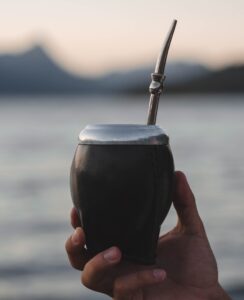
Today, we propose you get to know another type, the Argentinian Mate.
What’s its origins? Where does the Yerba Mate Plant come from? Is Mate good for your health? Why is it so popular? And more specifically, why is mate so important in Argentina? Find out what this delicious drink hides, and what sacred rites and social customs it harbors.
Let’s start at the beginning, from the Yerba Mate plantation
The Yerba Mate Plant (Ilex paraguariensis) is native to the Paraguay and Paraná river basins, in South America. It requires tropical temperatures and high humidity in the environment, as well as frequent rainfall, especially during flowering. It was discovered and implemented in drinks and food by the Guarani population of Argentina, Bolivia, Brazil and Paraguay.
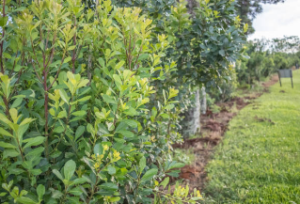
Mate, as we already know, is one of the most popular ways to consume yerba mate. The drink is an infusion prepared in a container, in which hot water is poured with the procesed plant, and it should be drink through a “Straw”. Just to clarify, in Argentina we also say “Mate” to the container with which we prepare the yerba mate infusion, or as we call it here in Pampa’s Way, “Mate Cup”.
The cultive itself
Up to these days, yerba mate has been widely cultivated commercially in Paraguay, Brazil, and Argentina since the 19th century, giving rise to an important industry.
For its part, Argentina is the main producer and exporter in the world with 60% of the global market.
The industrial process of the plant maintains the innovation of the Jesuits in South America, who introduced the crop and contributed to its diffusion and commercialization. They had such an impact in the yerba mate field, to the point that at that time the infusion became known as “Tea of the Jesuits”.
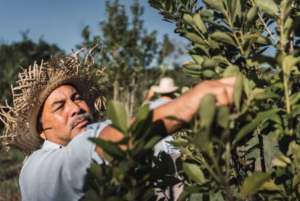
The yerba mate leaves are cut from the tree and subjected to “sapecado”. This generates a loss of humidity and fixes the chlorophyll through the heat it receives in huge tubes that rotate with paddles, where they are sealed.
After that they go through dryers, where they are again exposed to high temperatures. It continues with a first coarse grinding, after which they are stored for between 6 and up to 15 months. Finally, the last grinding is done and packaging for marketing.
Properties and Benefits of Yerba Mate Drink
The Guarani population has recognized the medicinal properties of mate for several centuries, and has been cultivating and drinking mate since ancient times.
Yerba mate drink is a digestive and cleansing infusion due to its diuretic effect, which causes the purification of excess sodium and regulates the volume and composition of body fluids. On the other hand, it also has antioxidants similar to green tea, which makes it a preserving drink for the body. It contains group B vitamins, and helps reduce bad cholesterol (LDL) such as high triglycerides.
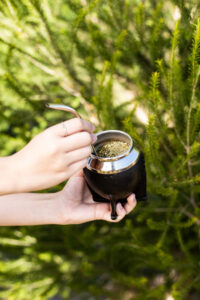
In addition, as with tea, coffee or chocolate, it has a stimulating and energetic effect due to the caffeine it contains. And, like some of these infusions, mate has a certain acidity. That’s the reason why some people like to add other herbs such as peppermint, mint or chamomile, which manage to neutralize the acidity or compensate for the slight stimulating effect of the caffeine. In addition, it’s a custom to add sugar or sweetener to the mate or the hot water you pour into it in order to also regulate the acidity of the herbs.
With the advancement of time and technology, every day we find more discoveries about the properties of this ancient drink emerge. Reason for which, the yerba mate drink is gaining international recognition.
An infusion with history and love
Guaraní

As we mentioned earlier, yerba mate was discovered by the Guarani groups from the lands of South America.
They collected the leaves in the Paraná jungle, where it grew in a wild state. In ancient times they did not process the leaves, but ate them fresh so initially they chewed them. They also threaded them into a thread that they tied to their waists, and they ate them throughout the day, or used them as a form of currency. It was later that they began to prepare the leaves as an infusion, drinking it from Gourd or Wooden cups.
For them, the yerba mate tree was a gift from the gods. Mate gained it status of rite in hands of the “Avá”, habitants from the territory that today occupies part of Paraguay, northeastern Argentina and southern Brazil. When their loved ones where already gone, they used to burry them and plant yerba mate in that same soil later. After the plant grew, their relatives harvested it and drank infusions prepared with it. They believed that in this way, the spirit of their loved ones would grow in the yerba mate plant and reach their body at the moment of drinking mate, standing by their side for the rest of their lives.
Jesuits
Then the Jesuits would come to these lands, whom we also talked about when it gets to comercialize yerba mate tea. They introduced the crop in the Guarani Jesuit missions, popularizing and marketing yerba mate. The Jesuits themselves praised the effects of the herb. They used to proclaim the yerba mate infusion gave a certain vigor to those who ingested it, and assured that quenched thirst better than pure water.
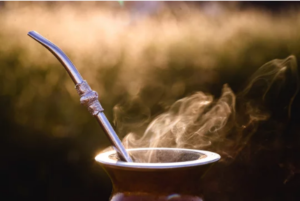
Colonizers
The way of preparing yerba mate infusion was transmitted by the Guarani to the Spanish and Portuguese colonizers. Over time it was adopted as a traditional drink in Argentina, Uruguay, southern Brazil, Paraguay, southern Chile and Bolivia.
As we can see, the yerba mate tea is a drink that doesn’t care about origins, social or economic conditions. It’s shared, and through this sharing, it becomes itself a drink of company, affection and love.
And so, what happened in Argentina with mate?
In imperial times, mate was widely distributed among the entire Viceroyalty of the Río de la Plata. Mate made no distinction between natives, slaves, Creoles, Spaniards or “Mestizos”: in all the houses they had breakfast and tea time with yerba mate infussion, accompanied by bread with “dulce de leche” or desserts.

Later, the Gaucho population grew and installed throughout Argentina, adoppting mate as a fundamental part of their identity. These gauchos were women and men who lived in the fields. They worked the land, always accompanied by their horses, fostering a culture of values of freedom and loyalty. They used to sit around the fire in front of the Asado, passing the mate from hand to hand. It was a way for them to relax and share a moment with others, catching up about their day.
During Argentina’s Independence in the 19th century, the tradition of drinking mate consolided. It was finally entrenched in the country’s national culture.
Argentinian Mate Today

Today, mate is definitively a cultural icon of Argentina, just like asado, tango, “empanadas” and the gaucho. The mate tradition lives on more than ever.
An average of 141 lbs (6.4 kg) per inhabitant is consumed annually in the country. It’s estimated that yerba mate is present in more than 90% of homes throughout the territory.
People, regardless of their origin, gather in their homes, parks, places of work and study, at any time of the day, to share some good “mates”. Just like the gauchos used to gather around the fire.

Why is mate so important in Argentina?
Argentinian mate symbolizes camaraderie, generosity, invitation and hospitality. It’s sincere love:
A solitary mate session at the afternoon while studying or watching a movie can be a peaceful rest from everyday life.
A round of mate with friends or family can become a time to talk and reflect on any topic.
It’s also a conecction to our loved ones and our home, so taking Mate with us is also a recurrent way of staying in touch with our land and people.
Remember that, in Argentina regardless of where are you from or where you are going, there’ll always be a warm cup of mate waiting for you, next to a fresh pice of bread with “dulce de leche” or homemade cookies, and an ear to listen to you.
So, are you coming this winter with us into the beautiful, friendly and cozy world of Mate?
Check out our Mate Cups, Sets, Yerba Containers, Straws and Bags.
Bonus! Recommendation from your friends of Pampa’s Way
If you are ever in Argentina, we recommend you to visit Misiones. It has some beautiful landscapes with the Iguazú Falls as protagonists, an incredible flora and fauna, and neither more nor less than the hidden Yerba Mate Trail.

The Yerba Mate Trail is a tour that blends tourism with gastronomy. Through green landscapes and friendly towns, this route takes travelers across the plantations of one of Argentina’s iconic drinks.
Get to know artisan stalls, both ecological and industrial. There, you will be able to see up close the complete production process of Yerba. Also, you can have a taste of herbs and learn the aspects of the mate ceremony.
Grab your backpack, camera and thirst for mate infusion, and travel the Yerba Trail in your own way.